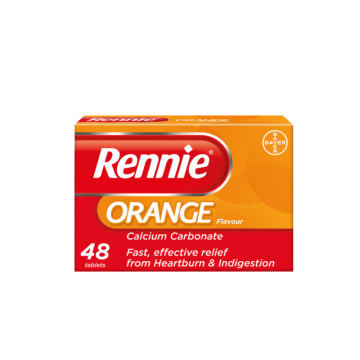
What is heartburn. acid reflux and gastro-oesophageal reflux disease (GERD)?
As part of normal digestion, the stomach produces acid to help break down the food we eat. It is usually contained within the stomach but, sometimes, the valve between the stomach and the oesophagus (food pipe) doesn’t work as it should, allowing acid to escape and irritate the sensitive lining of the food pipe. This is called acid reflux and the associated burning sensation in the chest is commonly referred to as heartburn.
Gastro-oesophageal reflux disease (abbreviated to GERD or GORD) is a condition in which a person experiences uncommonly frequent bouts of acid reflux. Many people experience acid reflux and heartburn occasionally, but when it’s frequent and severe it may be diagnosed as GERD.
Sometimes, the pain produced by GERD can be mistaken for heart-related chest pains so it’s important to understand your symptoms and to consult a doctor if you are unsure about the root of any pain you are experiencing.
If you’ve ever woken up with heartburn or indigestion, you’ll know it’s a fairly unpleasant way to start the day. Heartburn is the burning sensation you may feel in your throat or chest as a symptom of acid reflux. Acid reflux occurs when the valve between the stomach and the oesophagus (food pipe) doesn’t close properly, allowing excess acid to rise up towards the throat and the sensation of heartburn as a result. Lying down can often make it worse as the position can open the valve and escape into the oesophagus. This can lead to sleepless nights and feeling grumpy and tired the next day as a result.
Indigestion refers to a number of symptoms associated with pain or discomfort in the stomach area, particularly after eating. Even though the stomach lining is usually resilient to stomach acid, some people can develop increased sensitivity to it. In some cases, indigestion can also be the result of the stomach stretching, often after eating a meal. Common symptoms of indigestion include:
- Bloating
- Excessive gassiness
- Burning feeling in your belly
- Stomach pains that can move up behind your breastbone
- A knotted stomach or cramps
- Nausea or vomiting
- A rumbling or gurgling stomach
- Feeling uncomfortable after eating
These symptoms can range in severity, from being mildly annoying to very debilitating. Sometimes these symptoms can be a sign of a more serious condition, so if you are concerned about any of your symptoms, you should speak to a pharmacist or book a doctor’s appointment.
-
Directions
One or two tablets to be sucked or chewed as required, up to a maximum of eleven tablets a day. These doses may also be used during pregnancy and breast feeding. -
Ingredients
Calcium Carbonate 500mg, equivalent to 200mg Calcium, Also contains: Sucrose, Potato Starch, Pregelatinised Maize Starch, Magnesium Stearate, Talc, Citric Acid, Orange Flavour, Ponceau 4R (E124), Quinoline Yellow (E104), Saccharin, See leaflet for further information -
Storage Information
Do not store above 25cDo not store above 25c, away from direct sources of heat and humidity. Keep in original container
